Invest 30 seconds...
...for what may lead to a life altering association!
Help Line
- +91.8800.2828.00 (IND)
- 1030-1830 Hrs IST, Mon-Sat
- support@expertsglobal.com
...for what may lead to a life altering association!


The GMAT Data Insights section tests your ability to interpret and analyze data. It features 20 questions in 45 minutes, based on five question types: data sufficiency, table analysis, graphics interpretation, two-part analysis, and multi-source reasoning. The section is question-level adaptive.
To familiarize with all parts of the GMAT, take a free GMAT practice test
The Data Insights section of the GMAT evaluates a candidate’s ability to interpret, analyze, and reason with data. This section is designed to reflect the real-world analytical skills required in business management, where professionals make decisions based on complex and often incomplete information. The section does not simply test mathematical calculations or reading comprehension. It assesses the ability to make sense of structured and unstructured data and to apply logic in decision-making. A strong GMAT prep course that helps in developing concepts as well as in practice can help. A strong performance in this section showcases your ability to handle data-driven challenges. Whether your post-MBA goals are in consulting, finance, marketing, or analytics, mastering Data Insights is essential for proving your readiness.
The Data Insights section consists of 20 questions to be completed in 45 minutes. The section is question-level adaptive, which means the difficulty of each question is determined by your performance on the preceding ones. Questions must be answered in order, and you cannot return to a previous question once you move forward. There is no single fixed response format across all questions. Some questions offer five answer choices from which one must be selected. Others require multiple responses, and full credit is given only when all parts are answered correctly. There is no partial credit for partially correct responses. For instance, in Two-Part Analysis questions, both parts must be correct to receive credit. Similarly, Table Analysis and Multi-Source Reasoning often require evaluating a series of statements as true or false, where accuracy on all components is essential.
The section includes both quantitative and verbal content. You may be asked to interpret visuals, reason logically, perform calculations, or evaluate statements. These questions mirror the types of decisions you may be required to make in business situations, making the section highly relevant to real-world problem-solving.
There are five distinct question formats within the Data Insights section. Each format evaluates a particular kind of analytical reasoning. Familiarity with all formats is essential for a complete and effective preparation.
Each Data Sufficiency question presents a problem followed by two statements. Your task is not to solve the problem, but to determine whether the given statements provide enough information to answer it. You must select from five fixed answer choices, which represent different combinations of sufficiency. This question type emphasizes logical reasoning and precision over calculation. The challenge lies in identifying the minimum information needed and avoiding unwarranted assumptions.
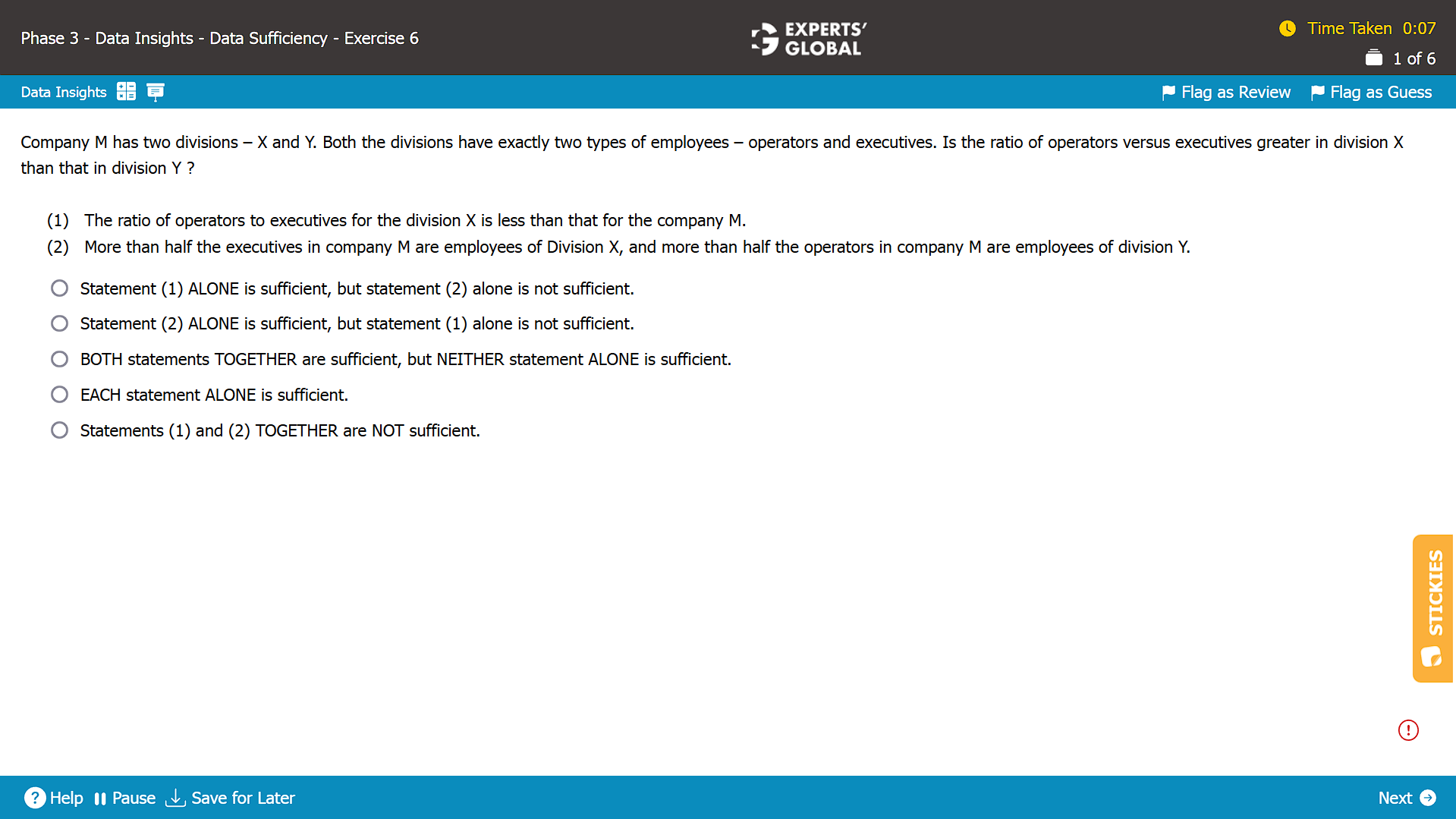
Correct Answer: D
Graphics Interpretation questions involve charts, graphs, or other visual data displays. You are typically presented with a drop-down menu for each of two or more blanks. You must select the most accurate interpretation based on the data. This format tests your ability to draw correct inferences from visual information. You must understand axes, legends, labels, and trends, and apply logical and quantitative reasoning to answer the questions.
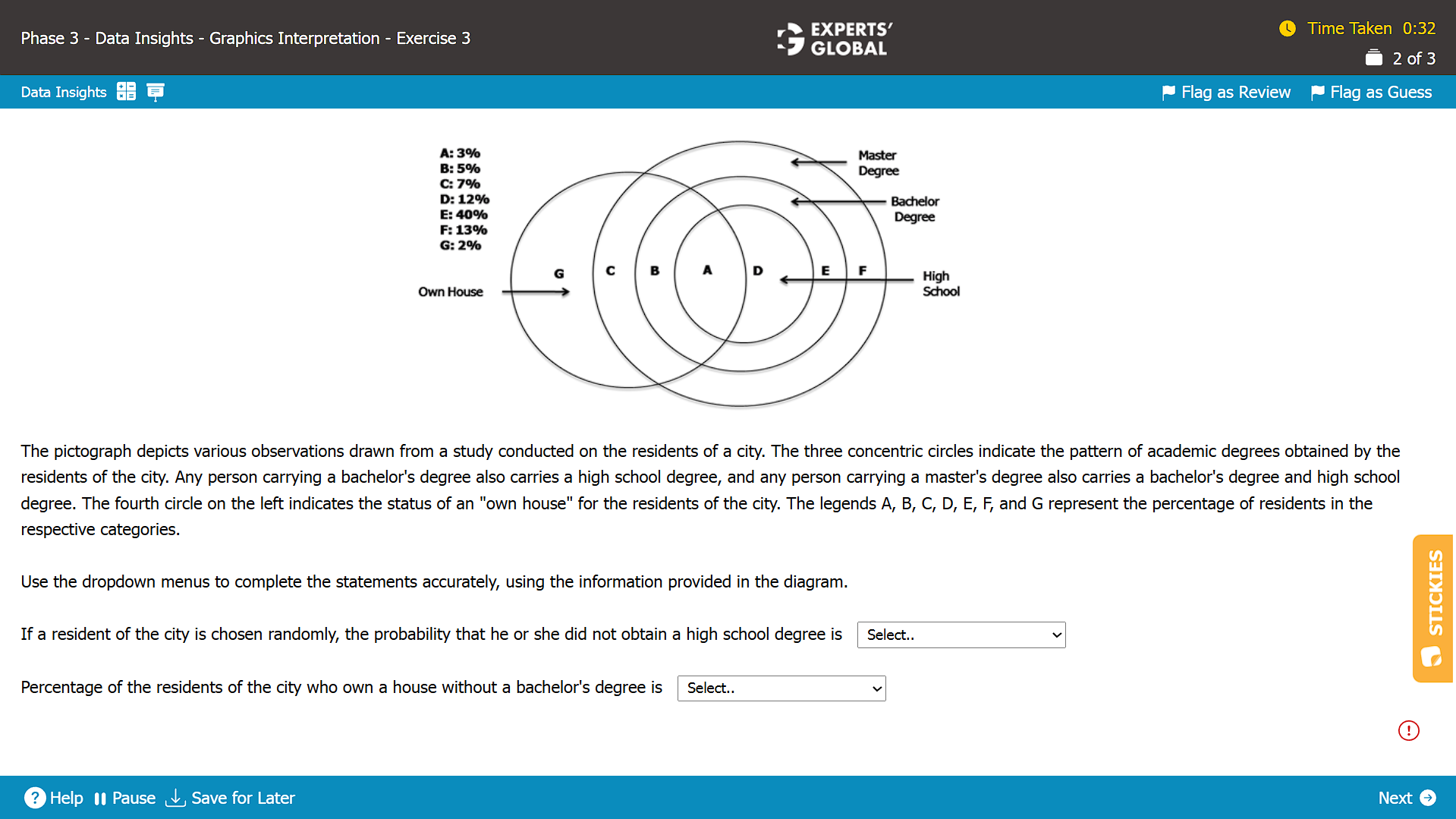
Correct Answer: 20% and 5%
In this format, you are given a short passage or scenario followed by two related questions. Each question is answered from the same list of answer choices, and both parts must be answered correctly to receive credit.
Two-Part Analysis questions may be quantitative, verbal, or a mix of both. They require structured, parallel reasoning, and often test how well you can isolate variables or track dependencies between statements.
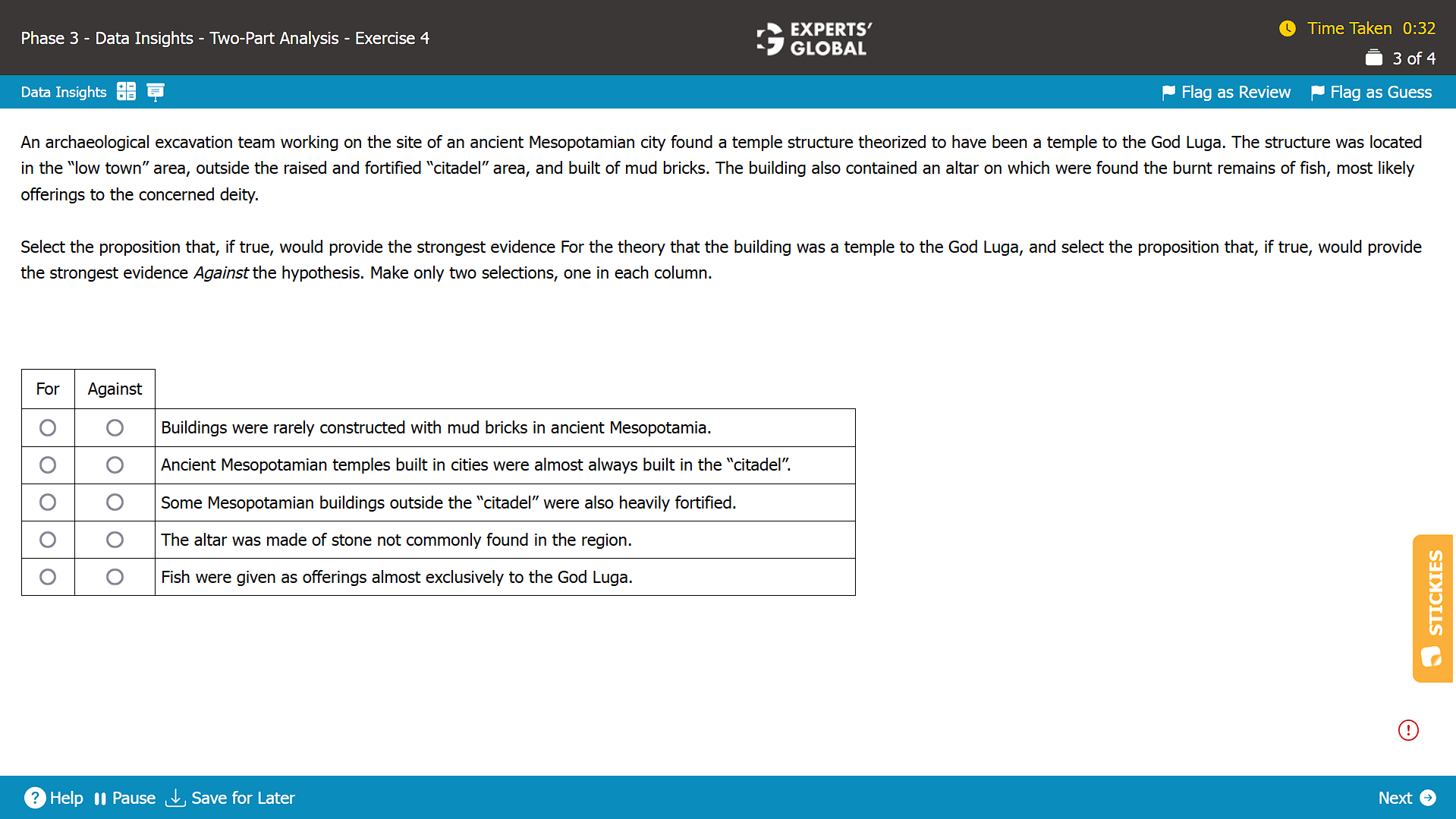
Correct Answer: E and B
Table Analysis presents a spreadsheet-style table that can be sorted by columns. You are asked to evaluate several statements and decide whether each one is true or false based on the data in the table.
This format tests your ability to work efficiently with structured data. You must identify trends, compare values, and apply logic to determine the validity of each statement. Full credit requires all evaluations in a question to be correct.
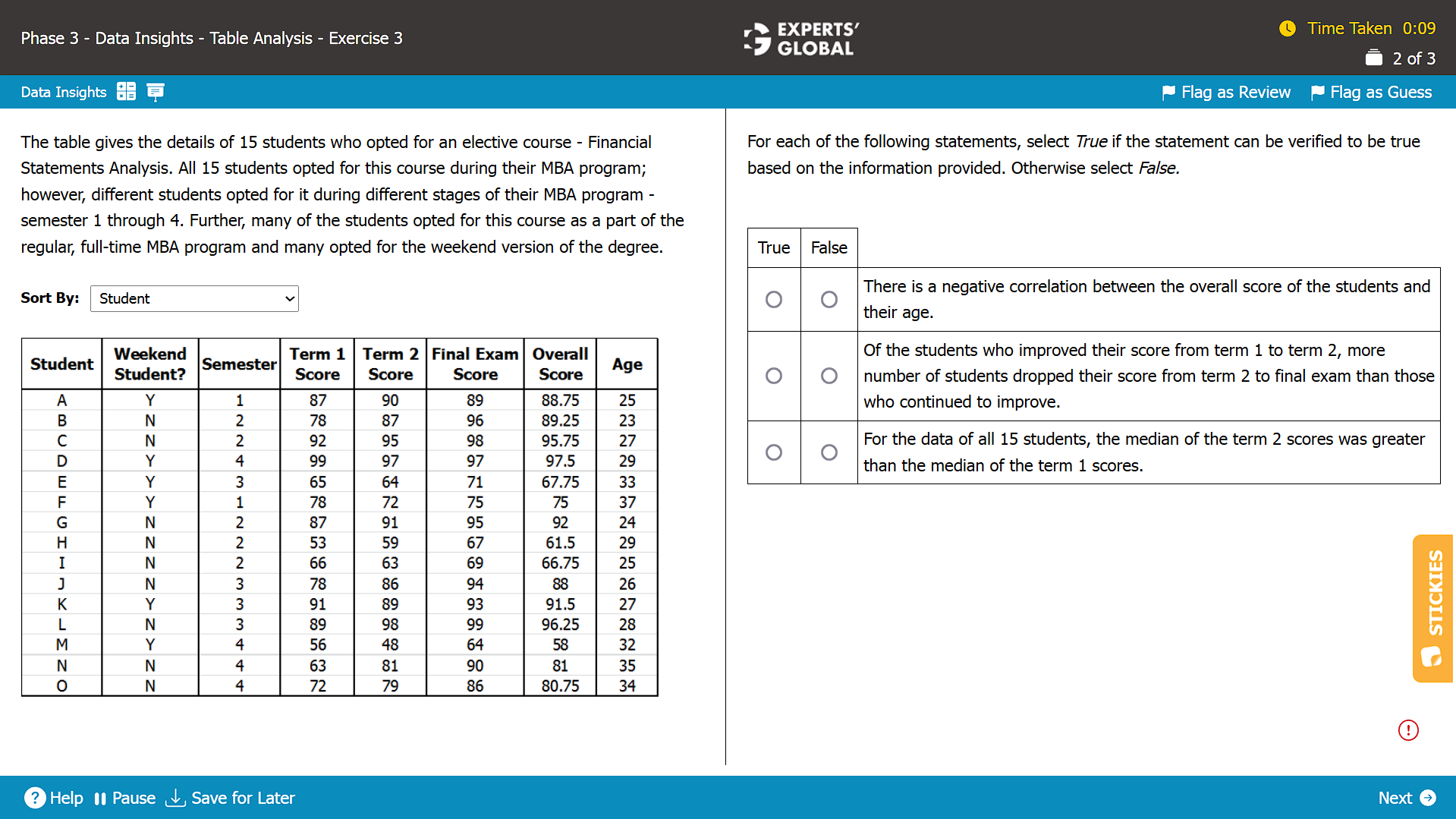
Correct Answer: False-False-True
Multi-Source Reasoning questions present information across multiple tabs, each containing different types of content such as texts, charts, memos, or tables. You are asked to analyze and synthesize data from across the tabs to answer questions. Questions may be in the form of multiple choice or a series of true-or-false statements. As with other multi-part formats, full credit depends on complete accuracy.
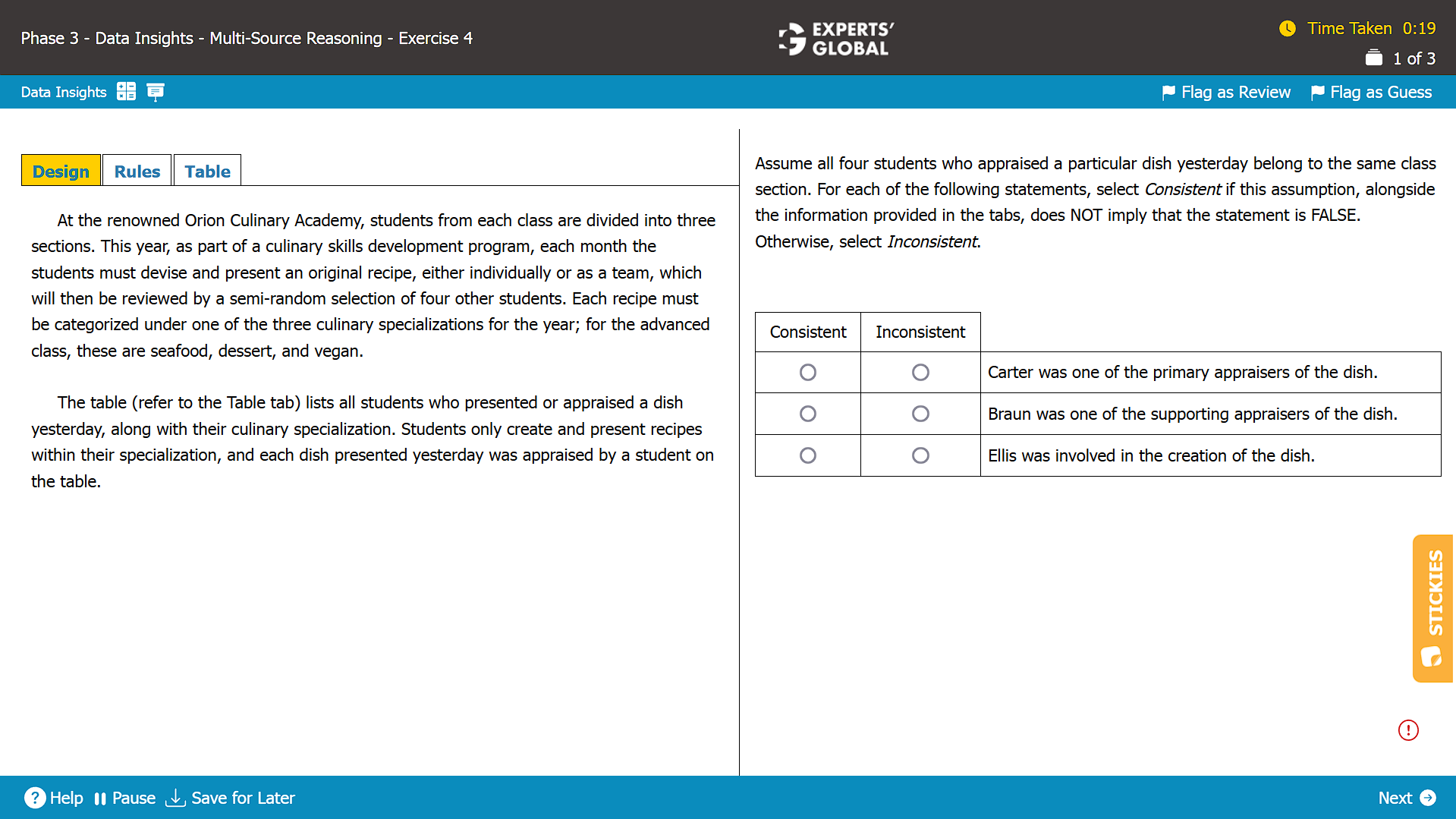
Correct Answer: Inconsistent-Consistent-Inconsistent
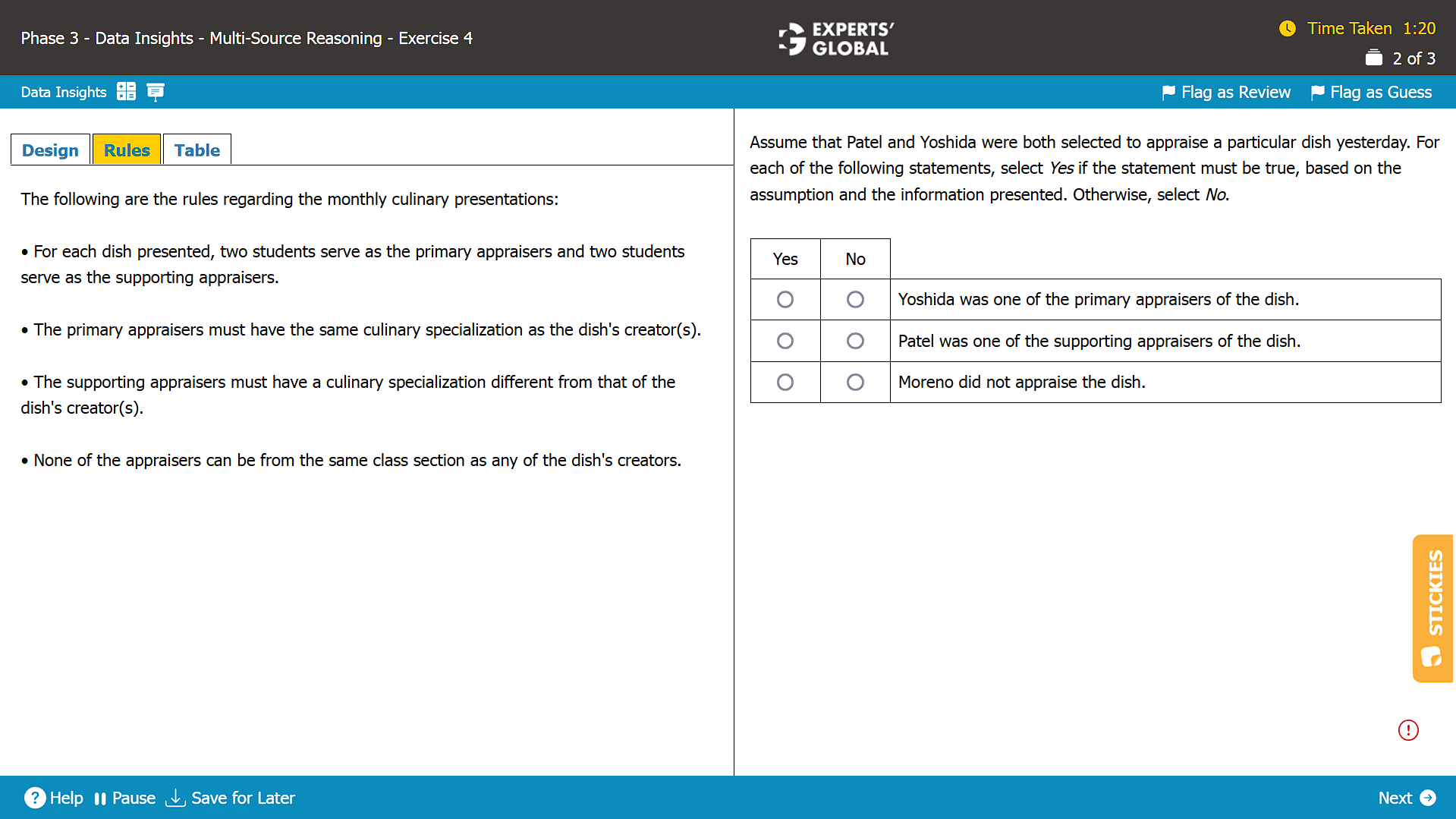
Correct Answer: No-Yes-Yes

Correct Answer: C
The Data Insights section tests a wide range of analytical abilities, including:
These skills align with the demands of business school and modern workplace environments, where professionals must routinely assess diverse forms of information before making data-driven decisions.
Time management is critical in the Data Insights section. With 20 questions to answer in 45 minutes, each question allows slightly over two minutes on average. However, some questions (example: MSR) will take longer than others.
Here are some useful time management strategies:
Maintaining a steady pace while ensuring accuracy on multi-part questions is one of the most critical skills to develop.
A targeted approach to preparation will help you build the necessary skills. Here are some strategies to guide your study:
The Data Insights section is one-third of the GMAT! The DI section is an integral part of your GMAT score and plays a significant role in your business school application. It demonstrates your readiness to tackle real-world business problems involving complex, multidimensional data. In an age where data literacy is essential across industries, strong performance in this section communicates that you can interpret, evaluate, and act on information from multiple perspectives. It shows that you can solve problems with structure, logic, and agility. Doing well in this section can also distinguish your application because a high score in Data Insights shows analytical maturity!
If you start early enough, an authentic MBA admission consulting team can guide you through the entire journey. From helping you plan your GMAT preparation and stay motivated, to keeping you away from common mistakes and sharing best practices, the right consulting team can make a real difference. Most importantly, the consulting team can help you strengthen your profile, so your application reflects your true potential.
The Data Insights section is not just a part of the GMAT. It is a test of your ability to engage with the kind of data and decision-making challenges that define modern business. The section rewards clarity of thought, sharp reasoning, and mental discipline. Prepare patiently, practice systematically, and develop confidence in working with both numbers and language. With a strategic approach, you can turn the Data Insights section into a strength that enhances your overall GMAT score and reflects your potential as a future business leader.
Accelerate your success with our complete MBA admissions and GMAT preparation bundle